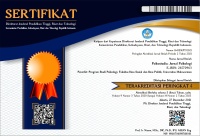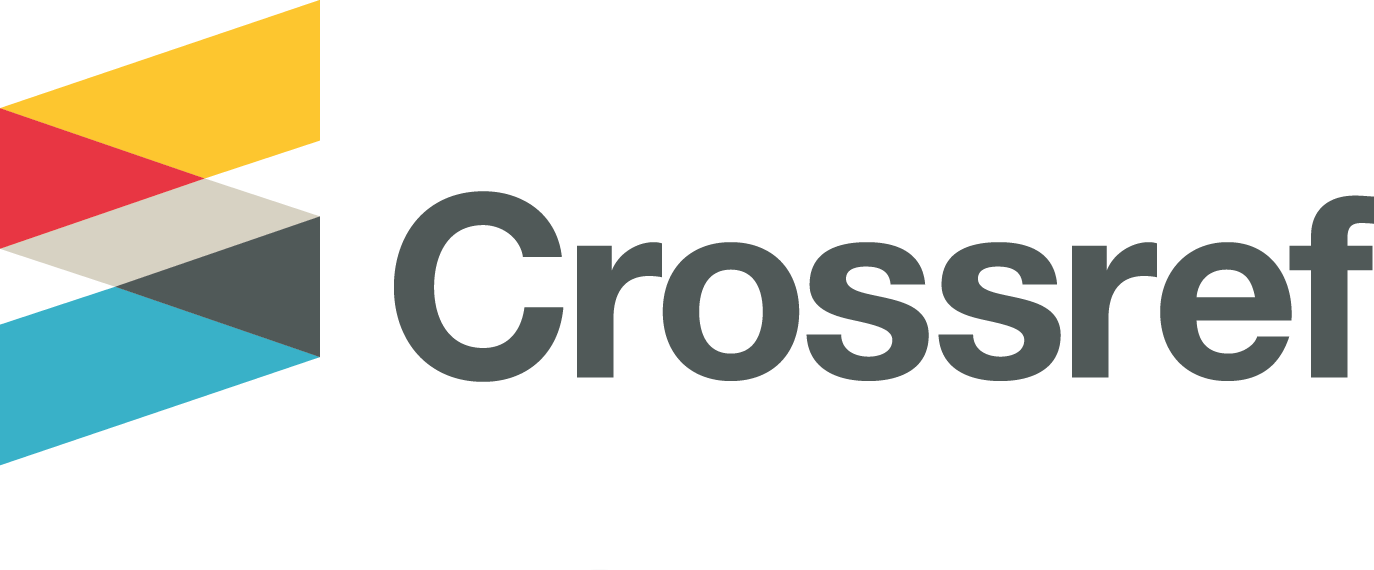Dark triad personality, resilience, and meaning of life in adolescents who have engaged in self-harm
Abstract
Adolescents who have committed self-harm often face emotional distress that affects the problem of the meaning of life. This study aims to determine the relationship between dark triad personality and resilience with the meaning of life in adolescents who have committed self-harm. The research method uses a quantitative approach with a multiple correlation analysis design. The sample was early to late adolescents aged 15-21 years who had committed self-harm for one month and had stopped self-harm behavior. The sample involved 434 people and was obtained using incidental sampling. The research instruments consisted of the Short Dark Triad (SD3), the Connor-Davidson Resilience Scale (CD-RISC), and the Meaning in Life Questionnaire (MLQ). The results majorly prove that there is a significant relationship between dark triad personality and resilience in the meaningfulness of life of adolescents who have committed self-harm (F change = 142.881 and sig. = 0.000). The results of the first minor research found that resilience is significantly related to the meaningfulness of life (r = 0.630 and sig. = 0.000). However, the results of the second minor research found the dark triad personality does not show a significant relationship to the meaningfulness of life where Machiavellianism (r = 0.024 and sig.= 0.312), narcissism (r = 0.048 and sig. = 0.173), and psychopathy (r = 0.048 and sig. = 0.158).
Remaja yang pernah melakukan self-harm sering menghadapi tekanan emosional sehingga mempengaruhi masalah kebermaknaan hidup. Penelitian ini bertujuan untuk mengetahui hubungan antara dark triad personality dan resiliensi dengan kebermaknaan hidup pada remaja yang pernah melakukan self-harm. Metode penelitian menggunakan pendekatan kuantitatif dengan desain analisis korelasi berganda. Sampel merupakan remaja awal hingga akhir pada usia 15–21 tahun, pernah melakukan self-harm selama satu bulan, dan telah berhenti dari perilaku self-harm. Sampel yang dilibatkan sebanyak 434 orang dan didapatkan dengan menggunakan incidental sampling. Instrumen penelitian terdiri dari Short Dark Triad (SD3), Connor-Davidson Resilience Scale (CD-RISC), dan The Meaning in life (MLQ). Hasil penelitian mayor membuktikan bahwa terdapat hubungan signifikan secara bersama-sama antara dark triad personality dan resiliensi dengan kebermaknaan hidup remaja yang pernah melakukan self-harm (F change = 142,881 dan sig.= 0,000). Kemudian, hasil penelitian minor pertama menemukan bahwa resiliensi berhubungan positif signifikan dengan kebermaknaan hidup (r = 0,630 dan sig.= 0,000). Namun, hasil penelitian minor kedua menemukan bahwa dark triad personality tidak berhubungan signifikan dengan kebermaknaan hidup (machiavellianism dengan nilai F = 0,024 dan sig.= 0,312; narcissism dengan nilai r = 0,048 dan sig.= 0,173; dan psychopathy dengan nilai r = 0,048 dan sig.= 0,158).
Keywords
Full Text:
FULL TEXTReferences
Adinda, T. S., & Prastuti, E. (2021). Regulasi emosi dan dukungan sosial: sebagai prediktor ide bunuh diri mahasiswa. Jurnal An-Nafs: Kajian Penelitian Psikologi, 6(1), 125-151. https://doi.org/10.33367/psi.v6i1.1520
Afrinti, R. (2020). Intesi melukai diri remaja ditinjau berdasarkan pola komunikasi orang tua. Mediapsi, 6(1), 37-47. https://doi.org/10.21776/ub.mps.2020.006.01.5
Agustin, D., Fatria. R. Q., & Febrayosi, P. (2019). Analisis butir self-harm inventory. Jurnal Muara Ilmu Sosial, Humaniora, dan Seni, 3(2), 396-402. http://dx.doi.org/10.24912/jmishumsen.v3i2.3880
Al-Haya, S. D. Z., & Alfaruqy, M. Z. (2023). Pengalaman wanita emerging adulthood dengan nonsuicidal self-harm: Interpretative phenomenological analysis. Jurnal EMPATI, 13(1), 38-49. https://doi.org/10.14710/empati.2024.40352
Connor, K. M., & Davidson, J. R. T. (2003). Development of a new resilience scale: The Connor- Davidson Resilience Scale (CD-RISC). Depression and Anxiety, 18(2), 76–82. https://doi.org/10.1002/da.10113
Dumaris, S., & Rahayu, A. (2019). Penerimaan diri dan resiliensi hubungan dengan kebermaknaan hidup remaja yang tinggal di panti asuhan. IKRA-ITH HUMANIORA: Jurnal Sosial dan Humaniora, 3(1), 71-77. https://journals.upi-yai.ac.id/index.php/ikraith- humaniora/article/view/454
Egan. V., Chan. S., & Shorter. G. W. (2014). The dark triad, happiness, and subjective well-being. Personality and Individual Differences, 67, 17-22. https://doi.org/10.1016/j.paid.2014.01.004
El-Musavira, M., & Rahayu, E. (2023). Emotional maturity and resilience with adjustment: Correlational study in blind adolescent. Psikostudia: Jurnal Psikologi, 12(3), 356-361. http://dx.doi.org/10.30872/psikostudia.v12i3.11076
Fadhila, N., & Syafiq, M. (2020). Pengalaman psikologis self-injury pada perempuan dewasa awal. Character Jurnal Penelitian Psikologi, 7(3), 167-184. https://doi.org/10.26740/cjpp.v7i03.36329
Frankl, V. E. (1992). Man’s search for meaning: An introduction to logotherapy. Beacon Press.
Hidayat, V. (2019). Kebermaknaan hidup pada mahasiswa semester akhir. Jurnal Psikologi Integratif, 6(2), 141. https://doi.org/10.14421/jpsi.v6i2.1491
Hidayati, K. B., & M Farid. (2016). Konsep diri, adversity quotient dan penyesuaian diri pada remaja. Persona Jurnal Psikologi Indonesia, 5(2). https://doi.org/10.30996/persona.v5i02.730
Insani, S., & Savira, S. (2023). Studi Kasus: Faktor penyebab perilaku self-harm pada remaja perempuan. Character Jurnal Penelitian Psikologi, 10(2), 439- 454. https://doi.org/10.26740/cjpp.v10i2.53861
Jenny, S. (2016). Understanding self-harm. London: Mind.
Jones, D. N., & Paulhus, D. L. (2013). Introducing the short dark triad (SD3): A brief measure of dark personality traits. Sage Jurnal, 21(1). 28-41. https://doi.org/10.1177/1073191113514105
King, L. A., & Hicks, J. A. (2021). The science of meaning in life. Annual Review of Psychology, 72(1), 561–584. https://doi.org/10.1146/annurev-psych-072420-122921
Krueger, E. A., Holloway, I. W., Lightfoot, M., Lin, A., Hammack, P. L., & Meyer, I. H. (2020). Psychological distress, felt stigma, and HIV prevention in a national probability sample of sexual minority men. LGBT Health, 7(4), 190–197. https://doi.org/10.1089/lgbt.2019.0280
Kumalah, A. N., & Herdiana, I. (2023). Assertiveness and its relation to dating violence on female victims in late adolescence (Asertivitas dan kekerasan dalam pacaran pada korban perempuan remaja akhir). Psikostudia: Jurnal Psikologi, 12(3), 383-392. http://dx.doi.org/10.30872/psikostudia.v12i3.11189
Lasota, A., & Mróz, J. (2021). Positive psychology in times of pandemic—time perspective as a moderator of the relationship between resilience and meaning in life. International Journal of Environmental Research and Public Health, 18(24), 13340. https://doi.org/10.3390/ijerph182413340
Lämmle, L., & Ziegler, M. (2014). Dark Triad – (Anti) social behaviour to others and self. Personality and Individual Differences, 60, S16. https://doi.org/10.1016/j.paid.2013.07.371
Lämmle, L., Oedl, C., & Ziegler, M. (2014). Don’t threaten me and my dark side, or even self-harm won’t stop me from hurting you. Personality and Individual Differences, 67. 87–91. https://doi.org/10.1016/j.paid.2013.12.024
Lowe-Calverley, E., & Grieve, R. (2017). Web of deceit: relationships between the dark triad, perceived ability to deceive and cyberloafing. Cyberpsychology: Journal of Psychosocial Research on Cyberspace, 11(2). https://doi.org/10.5817/cp2017-2-5
Latipun, M. N. (2014). Kesehatan mental konsep dan penerapan. Malang: UMM Press.
Murphey, D., Barry, M., & Vaughn, B. (2013). Positive mental health: Resilience. Adolescent Health Highlight, 3,1-6. https://doi.org/10.1037/e538142013-001
Nabilah, I. F., Safaria, T., & Urbayatun, S. (2022). Suffering, self-acceptance and finding the meaning of life in women with breast cancer after mastectomy. Psikostudia: Jurnal Psikologi, 11(2), 180. http://dx.doi.org/10.30872/psikostudia.v11i2.7297
Norman, H., Oskis, A., Marzano, L., & Coulson, M. (2020). The relationship between self‐harm and alexithymia: A systematic review and meta‐analysis. Scandinavian Journal of Psychology, 61(6), 855–876. https://doi.org/10.1111/sjop.12668
O’Boyle, E. H., Forsyth, D. R., Banks, G. C., & McDaniel, M. A. (2012). A meta-analysis of the dark Triad and work behavior: A social exchange perspective. Journal of Applied Psychology, 97(3), 557–579. https://doi.org/10.1037/a0025679
Paulhus, D.L., & Williams, K. M. (2002). The dark triad of personality: Narcissism, machiavellianism, and psychopathy. Journal of Research in personality, 36, 556-563. http://dx.doi.org/10.1016/S0092-6566(02)00505-6.
Prusik, M., & Szulawski, M. (2019). The relationship between the dark triad personality traits, motivation at work, and burnout among HR recruitment workers. Frontiers in Psychology, 10. https://doi.org/10.3389/fpsyg.2019.01290
Puteri, N. M. (2023, Desember 4). Perilaku self-harm meningkat pada remaja Indonesia: Krisis kesehatan mental? Kumparan. https://kumparan.com/ainunmuthia13/perilaku-self- harm-meningkat-pada-remaja-indonesia-krisis-kesehatan-mental-21fGXn93VoD/1
Rahardjo, T. A., & Kusumiati, R. Y. E. (2023). Contribution of emotional maturity with behavioral tendencies of self-injury in adolescents. Psikostudia: Jurnal Psikologi, 12(1), 99-104. http://dx.doi.org/10.30872/psikostudia.v12i1.9311
Rais, M. R. (2022). Kepercayaan diri (Self confidence) dan perkembangannya pada remaja. AL-IRSYAD, 12(1), 40. https://doi.org/10.30829/al-irsyad.v12i1.11935
Ricca, V. S., & Munthe, A. (2015). Hubungan bersyukur dengan makna hidup narapidana anak di lembaga pemasyarakatan anak kelas II B Pekanbaru. Jurnal Penelitian Sosial Keagamaan, 18(1), 41-61. http://.doi.org/10.24014/kutubkhanah.v18i1.1472
Rizal, I., & Handayani, B. (2021). Gambaran kepribadian gelap (dark triad personality) pada pengguna media sosial. Al-Hikmah Jurnal Agama dan Ilmu Pengetahuan, 18(1), 44–53. https://doi.org/10.25299/al-hikmah:jaip.2021.vol18(1).5564
Safira, F. M., & Prabawa, A. F. (2024). Konsep teori hubungan resiliensi dan religiositas dengan perilaku self-harm pada siswa. Social, Humanities, and Education Studies (SHES): Conference series. 7(3). https://doi.org/10.20961/shes.v7i3.91634
Sandra, R., Sulastri, S., & Proborini, R. (2024). Resiliensi pada anak remaja dan keluarga broken home. Absorbent Mind, 4(1), 115-126. https://doi.org/10.37680/absorbent_mind.v4i1.5003
Santoso, L. Y., & Huwae, A. (2023). Resilience and meaningfulness of life in broken home adolescents. Bisma the Journal of Counseling, 7(1), 91–98. https://doi.org/10.23887/bisma.v7i1.58582
Shafira, A.N., & Hargiana, G. (2022). Self-harm behavior pada mahasiswa keperawatan. Jurnal Kesehatan, 11(2), 123-134. https://doi.org/10.46815/jk.v11i2.83
Steger, M. F., Frazier, P., Oishi, S., & Kaler, M. (2006). The meaning in life questionnaire: assessing the presence of and search for meaning in life. Journal of Counseling Psychology, 53(1), 80–93. https://doi.org/10.1037/0022-0167.53.1.80
Syaputri, D. D. (2021) Resiliensi dan kebermaknaan hidup mantan narapidana penyalagunaan narkoba di Korang Tigo Jerong Kecamatan V Koto Timur Kabupaten Padang Pariaman. Ranah research: Journal of Multidisciplinary Research and Development, 4(1), 20-42. https://doi.org/10.38035/rrj.v4i1.419
Thesalonika, T., & Nurliana, C, A. (2021). Perilaku self-harm atau melukai diri sendiri yang dilakukan oleh remaja (self-harm or self-injuring behavior by adolescents). Focus Jurnal Pekerjaan Sosial, 4(2), 213. https://doi.org/10.24198/focus.v4i2.31405
Utomo, R. H. R. P., & Meiyuntari, T. (2015). Kebermaknaan hidup, kestabilan emosi dan depresi. Persona Jurnal Psikologi Indonesia, 4(03). https://doi.org/10.30996/persona.v4i03.722
Wahyudi, A. (2020). Analisis model rasch pada pengembangan skala resiliensi. 6(2), 68-74. https://doi.org/10.52657/jfk.v6i2.1157
Wahyuni, E., & Wulandari, V. S. (2022). Resiliensi remaja dan implikasinya terhadap kebutuhan pengembangan buku bantuan diri. INSIGHT: Jurnal Bimbingan Konseling, 10(1), 78–88. https://doi.org/10.21009/insight.101.10
Wibisono, B. K. (2016). Kajian literatur tentang pola asuh dan karakteristik kepribadian sebagai faktor penyebab perilaku melukai diri pada remaja. Prosiding Seminar Nasional Psikologi Empowering Self. ISBN 978-602-1145-30-2.
Wulandari, R. R., Fitriah, A., & Marsah, G. C. (2024). Pengaruh kebermaknaan hidup terhadap perilaku self-harm pada remaja. Liberosis: Jurnal Psikologi dan Bimbingan Konseling. 5(1), 81-90. https://doi.org/10.3287/liberosis.v5i1.4941
DOI: http://dx.doi.org/10.30872/psikostudia.v14i4.20744
Refbacks
- There are currently no refbacks.
Copyright (c) 2025 Qaraan Cotje Noya, Arthur Huwae

This work is licensed under a Creative Commons Attribution-ShareAlike 4.0 International License.
Psikostudia: Jurnal Psikologi is indexed by :
PSIKOSTUDIA: Jurnal Psikologi Published by Faculty of Social and Political Siences, University of Mulawarman, Samarinda, East Kalimantan and This work is licensed under a Creative Commons Attribution-ShareAlike 4.0 International License.
_________________________________________
PSIKOSTUDIA: Jurnal Psikologi
Department of Psychology
Faculty of Social and Political Siences, University of Mulawarman
Jl. Muara Muntai Kampus Gn. Kelua Samarinda 75411
Phone: +62 813 35350368
E-Mail: psikostudia@fisip.unmul.ac.id




















